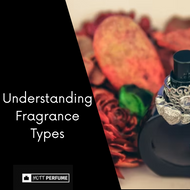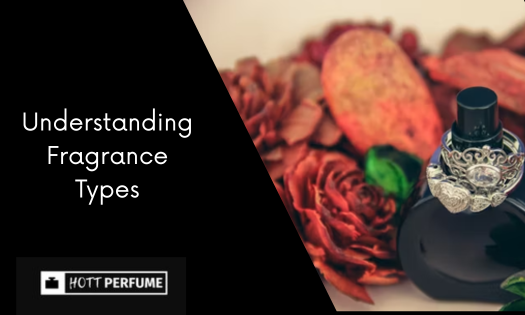Understanding Fragrance Types
Posted by Tina Wilson on Sep 23rd 2025
Introduction to Eau de Parfum and Concentration
Eau de parfum (EDP) is one of the most popular fragrance types, known for its balanced combination of scent intensity and longevity. With an oil concentration typically between 15% and 20%, EDP offers a noticeable and lasting aroma that generally lasts around 4 to 5 hours on the skin. This makes it a versatile choice suitable for both day and evening wear. The term “eau de parfum” distinguishes this fragrance type from lighter options like eau de toilette and eau de cologne, which have lower concentrations of fragrance oils and shorter wear times. For example, if you are considering popular men's EDP fragrances, you might be interested in this expert review comparing Dior Sauvage and Versace Eros.
Understanding the differences in fragrance concentrations is essential for selecting the right scent for various occasions, personal preferences, and desired longevity. Eau de parfum sits just below pure perfume (parfum) in terms of concentration, which is important to understand the difference between Sauvage Elixir and Parfum as well as the difference between eau de toilette and cologne, or when comparing Burberry Her vs Elixir, providing a rich scent experience without being overpowering.
Key points about eau de parfum and fragrance concentrations include:
-
Eau de parfum contains 15-20% fragrance oil concentration, offering a strong and lasting scent.
-
It typically lasts 4 to 5 hours, making it suitable for extended wear throughout the day or evening.
-
EDP is more concentrated than eau de toilette (5-15%) and eau de cologne (2-4%), but less than pure parfum (20-30%).
-
The higher concentration means the scent is richer and more intense, but still balanced enough for versatile use.
-
Understanding fragrance concentration helps in choosing scents that match occasions, climate, and personal style.
-
Eau de parfum is a popular choice for those seeking a long-lasting fragrance without the intensity or cost of pure parfum.
By knowing these details, including the factors that influence the final scent you can make informed decisions when selecting fragrances that best suit your lifestyle and preferences.
Cheap vs. Expensive Perfumes – Can You Smell the Difference?
Eau de Toilette and Everyday Wear
Eau de toilette (EDT) is a popular choice for daily fragrance use due to its lighter sweet scent and moderate longevity.
-
Contains 5% to 15% fragrance concentration, lasting approximately 2 to 3 hours.
-
The term “eau de toilette” comes from the French phrase “faire sa toilette,” meaning getting ready.
-
Convenient for everyday wear and easy to carry in small containers for on-the-go reapplication.
-
Offers a lighter, fresher scent ideal for daytime use, office settings, and casual occasions.
-
Modern marketing often associates EDT and eau de cologne with men, and eau de parfum with women, but fragrance types are not limited by gender.
-
Anyone can wear any fragrance type based on personal preference and occasion.
EDT’s balance of freshness and portability makes it a versatile option for everyday fragrance needs.
Cologne and Eau de Cologne Characteristics
Eau de cologne (EDC) is known for its light, refreshing scent with herb and citrus notes and low fragrance concentration.
-
Contains 2% to 4% fragrance oils with a high alcohol content, resulting in a scent that lasts up to 2 hours.
-
Traditionally features herbaceous and citrus notes, with minimal base notes for a fresh, uplifting aroma.
-
Has a shorter longevity compared to other fragrance types due to its low oil concentration.
-
Typically more affordable and sold in larger bottles because it requires more frequent reapplication.
-
The scent duration can vary depending on individual skin type and environmental factors.
Eau de cologne is ideal for those seeking a light, invigorating fragrance for short-term wear.
Lasting Power and Fragrance Longevity
Perfumes have the highest concentration of fragrance oils, typically over 20%, making them a popular choice for men's fragrance which allows them to last between 6 to 8 hours or more. Eau de parfum offers a longer-lasting scent compared to lighter fragrance types like eau de toilette and cologne, making it a popular choice for those seeking extended wear. The longevity of any fragrance depends not only on its concentration of perfume oil but also on individual factors such as skin type, with oily skin generally retaining scents longer than dry skin. People with sensitive skin often benefit from parfums because they contain less alcohol, which helps reduce skin dryness and irritation. Considering the lasting power of a fragrance is crucial when selecting the right scent for daily use, ensuring it meets your needs for both duration and comfort.
The Difference Between Perfume and Cologne
-
Fragrance Concentration: Perfumes, also known as parfum, contain the highest concentration of fragrance oils, typically between 20% and 30%. This high concentration results in a richer, more intense scent that lasts significantly longer on the skin—often 6 to 8 hours or more. In contrast, colognes have a much lower concentration of fragrance oils, usually around 2% to 4%, which produces a lighter scent that generally lasts only 1 to 2 hours.
-
Aroma Strength and Longevity: Due to their higher oil content, perfumes deliver a stronger and more complex aroma that evolves over time, revealing different fragrance notes as it wears. Colognes, being lighter, offer a fresher and more subtle scent that tends to evaporate quickly, requiring more frequent reapplication.
-
Cost and Packaging: Perfumes are typically more expensive because of the higher concentration of precious oils and the more intricate blending process. They are often packaged in smaller bottles due to their potency. Colognes are more affordable and usually come in larger bottles since they need to be applied more liberally and frequently.
-
Usage and Occasion: Perfumes are often chosen for special occasions, evening wear, or when a long-lasting impression is desired. Colognes are popular for casual, daytime use or warmer climates where a lighter scent is preferred.
-
Personal Preference and Skin Interaction: Perfumes tend to be more suitable for those who want a bold, enduring fragrance, while colognes appeal to individuals who prefer a subtle, refreshing scent. Additionally, the higher alcohol content in colognes can be more drying to the skin compared to perfumes, which have less alcohol due to their oil concentration.
-
Informed Choice: Understanding these differences allows you to select a fragrance that aligns with your lifestyle, budget, and scent preferences, ensuring you get the desired intensity and longevity from your fragrance.
By considering these detailed factors, you can make a well-informed decision between perfume and cologne that best suits your needs.
Fragrance vs Perfume: Understanding the Key Differences
Eau Fraiche and Lightweight Fragrances
Eau fraiche is a very light fragrance option, perfect for those who prefer a subtle and refreshing scent. It contains a low concentration of fragrance oils, typically between 1% and 3%, which is even lighter than eau de cologne, resulting in a scent that usually lasts up to two hours. Unlike many other fragrances, eau fraiche is made mostly with water instead of alcohol, making it gentle and suitable for sensitive skin. Its soft aroma features delicate fragrance notes and a low alcohol content, providing a fresh and unobtrusive scent.
Other lightweight fragrance types, such as mists and aftershaves, offer additional mild scent options. Understanding these fragrance categories can help you choose a scent that aligns with your personal preferences and skin sensitivity. Overall, eau fraiche is an excellent choice for anyone seeking a gentle, fresh, and easy-to-wear fragrance.
Conclusion
The world of fragrances is rich and diverse, offering a wide range of types to suit different preferences and needs. Understanding the various fragrance types, their concentrations, and unique characteristics, including the french term used for each type, is essential for selecting the perfect scent that complements your lifestyle. From the long-lasting intensity of eau de parfum to the light, refreshing nature of eau fraiche, each fragrance type brings its own advantages. By taking into account factors such as skin type, occasion, personal taste, and finding the best deals on your favorite perfumes, individuals can make informed choices that enhance their fragrance experience. Ultimately, the key to finding your ideal scent lies in appreciating the differences between fragrance types and concentrations, allowing you to enjoy a fragrance that truly resonates with you.



